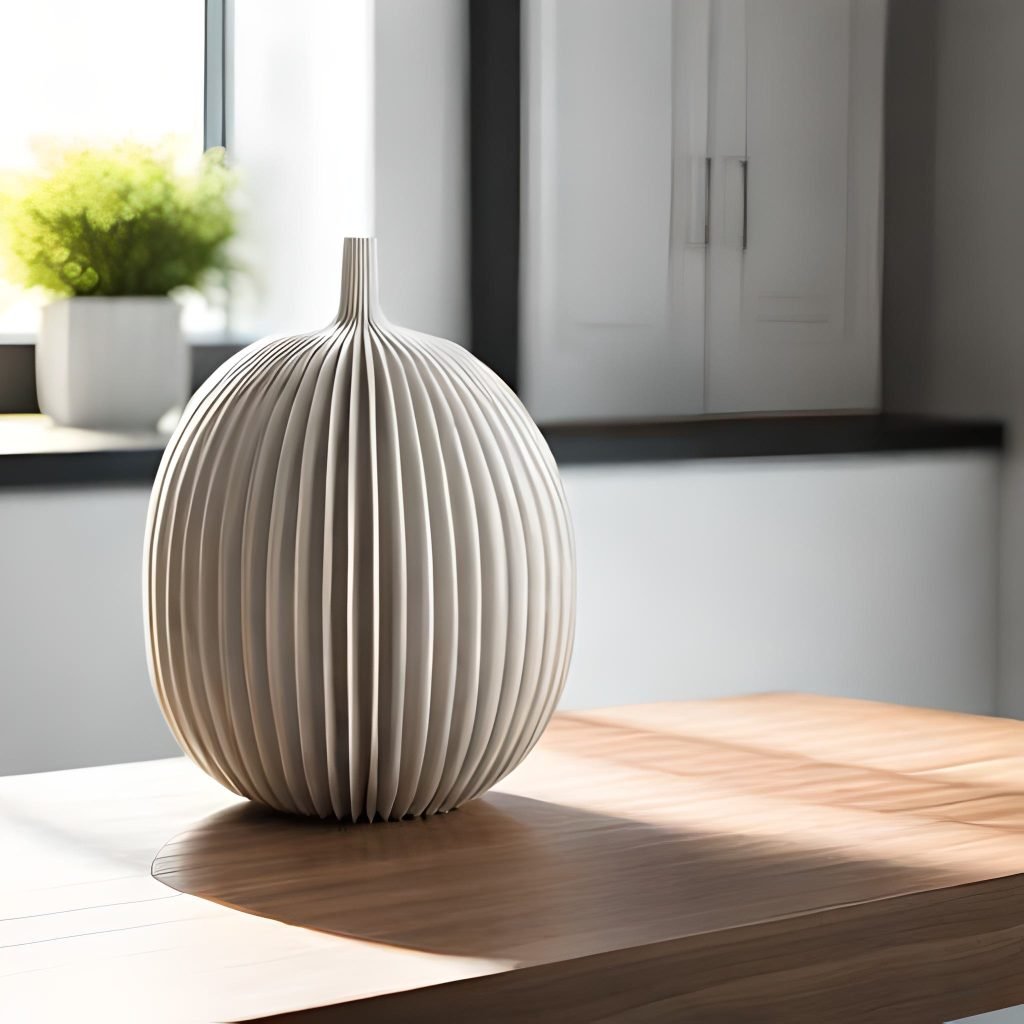Last Updated on August 24, 2023 by
The world of interior design is constantly evolving, and as a result, new technologies are constantly emerging. One of the most exciting developments in recent years is the use of 3D printing for home decor. With this innovative technology, you can create customized, eco-friendly, cost-effective pieces that transform your living space. This article will explore the benefits of 3D printing for home decor. Additionally, we’ll delve into the different types of 3D printing technologies, as well as some creative ideas and tips for choosing suitable materials. So without further ado, let’s dive in!
Table of Contents
The Benefits of 3D Printing for Home Decor
Customization
One of the most significant advantages of 3D printing is the ability to customize your home decor. Traditional manufacturing methods often limit you to mass-produced items that lack personality and uniqueness. However, with 3D printing, you can create one-of-a-kind pieces that truly reflect your style and taste.
Eco-Friendliness
3D printing can also be a more eco-friendly option for home decor. Traditional manufacturing processes often result in significant waste, whereas 3D printing allows more efficient use of materials. Additionally, you can choose to use eco-friendly materials, like biodegradable plastics, further reducing your environmental impact.
Cost-Effectiveness
In many cases, 3D printing can be a more cost-effective solution for home decor. By eliminating the need for expensive molds and other production tools, you can produce unique items at a fraction of the cost of traditional manufacturing. Moreover, as 3D printing technology advances, materials and printers become more affordable.
Unique Designs
Finally, 3D printing allows you to create unique and intricate designs that would be difficult or impossible to achieve with traditional manufacturing methods. This means you can add an extra layer of creativity and originality to your home decor, making it truly stand out.

Types of 3D Printing Technologies for Home Decor
Fused Deposition Modeling (FDM)
FDM is the most common type of 3D printing technology, using a heated nozzle to melt and extrude thermoplastic material layer by layer. Due to its affordability and durability, FDM is ideal for creating larger home decor items, like furniture and fixtures.
Stereolithography (SLA)
SLA is a more precise 3D printing technology that uses a laser to solidify liquid resin layer by layer. This method creates smaller, more intricate home decor pieces, such as decorative accessories and detailed wall art.
Selective Laser Sintering (SLS)
SLS is another advanced 3D printing technology that uses a laser to fuse powdered materials, like nylon or metal, layer by layer. This technique is ideal for creating robust, lightweight home decor, lighting fixtures, and complex sculptures.
Creative Ideas for 3D Printed Home Decor
Wall Art
With 3D printing, you can create unique and eye-catching wall art that adds depth and dimension to your space. From geometric designs to intricate patterns, the possibilities are endless.
Furniture and Fixtures
3D printing allows for the creation of custom furniture and fixtures that are tailored to your specific needs and style preferences. Think custom shelving units, personalized coat racks, or even one-of-a-kind chairs and tables.

Lighting
Design innovative lighting solutions using 3D printing. Create stunning chandeliers, pendant lights, or custom lampshades that cast interesting shadows and patterns on your walls.
Decorative Accessories
Add the finishing touches to your space with 3D-printed decorative accessories. Design personalized picture frames, custom vases, or even intricate sculptures that serve as conversation starters.
Tips for Choosing the Right 3D Printing Materials
Durability
When selecting materials for your 3D-printed home decor, consider the material’s durability. For items that will be subjected to wear and tear, like furniture, choose materials like ABS or nylon for their strength and resilience.
Aesthetic Appeal
Consider the aesthetic appeal of the material, as it will impact the overall look and feel of your decor. Materials like PLA and resin offer a wide range of colors and finishes, allowing you to create pieces that complement your existing design scheme.

Environmental Considerations
As mentioned earlier, you can opt for eco-friendly materials like biodegradable PLA or wood-filled filaments for a more sustainable approach to your home decor.
Conclusion
3D printing for home decor offers a world of possibilities, allowing you to create customized, eco-friendly, and cost-effective pieces that truly showcase your creativity and style. By understanding the different types of 3D printing technologies and materials, you can bring your design visions to life and transform your living space into a unique and stylish haven.
FAQs
The cost of 3D printing for home decor varies depending on factors like the type of technology, materials, and the complexity of the design. However, as 3D printing technology becomes more accessible and affordable, it is becoming a cost-effective option for many.
The time it takes to 3D print home decor items depends on the size, complexity, and printing technology used. Smaller items may take just a few hours, while more extensive or more intricate pieces may take days to complete.
Yes, if you can access a 3D printer and the necessary software, you can create your own 3D-printed home decor items. However, you may need to work with a professional 3D printing service for more complex designs or materials.
Yes, when made with the appropriate materials and techniques, 3D-printed home decor items can be both safe and durable. Be sure to choose materials suited for the item’s intended use and environment to ensure its longevity and safety.
There are numerous online platforms, such as Pinterest, Instagram, and various 3D printing communities, where you can find inspiration and ideas for 3D printed home decor designs. Additionally, collaborating with local artists or exploring design-focused blogs can help spark your creativity.



























